Scientists used nanoparticles to introduce genetic material into plants, enabling faster and temporary crop modifications.



Researchers are breaking new ground with halide perovskites, promising a revolution in energy-efficient technologies.
By exploring these materials at the nanoscale.
The term “nanoscale” refers to dimensions that are measured in nanometers (nm), with one nanometer equaling one-billionth of a meter. This scale encompasses sizes from approximately 1 to 100 nanometers, where unique physical, chemical, and biological properties emerge that are not present in bulk materials. At the nanoscale, materials exhibit phenomena such as quantum effects and increased surface area to volume ratios, which can significantly alter their optical, electrical, and magnetic behaviors. These characteristics make nanoscale materials highly valuable for a wide range of applications, including electronics, medicine, and materials science.

Researchers have discovered that superconducting nanowire photon.
A photon is a particle of light. It is the basic unit of light and other electromagnetic radiation, and is responsible for the electromagnetic force, one of the four fundamental forces of nature. Photons have no mass, but they do have energy and momentum. They travel at the speed of light in a vacuum, and can have different wavelengths, which correspond to different colors of light. Photons can also have different energies, which correspond to different frequencies of light.
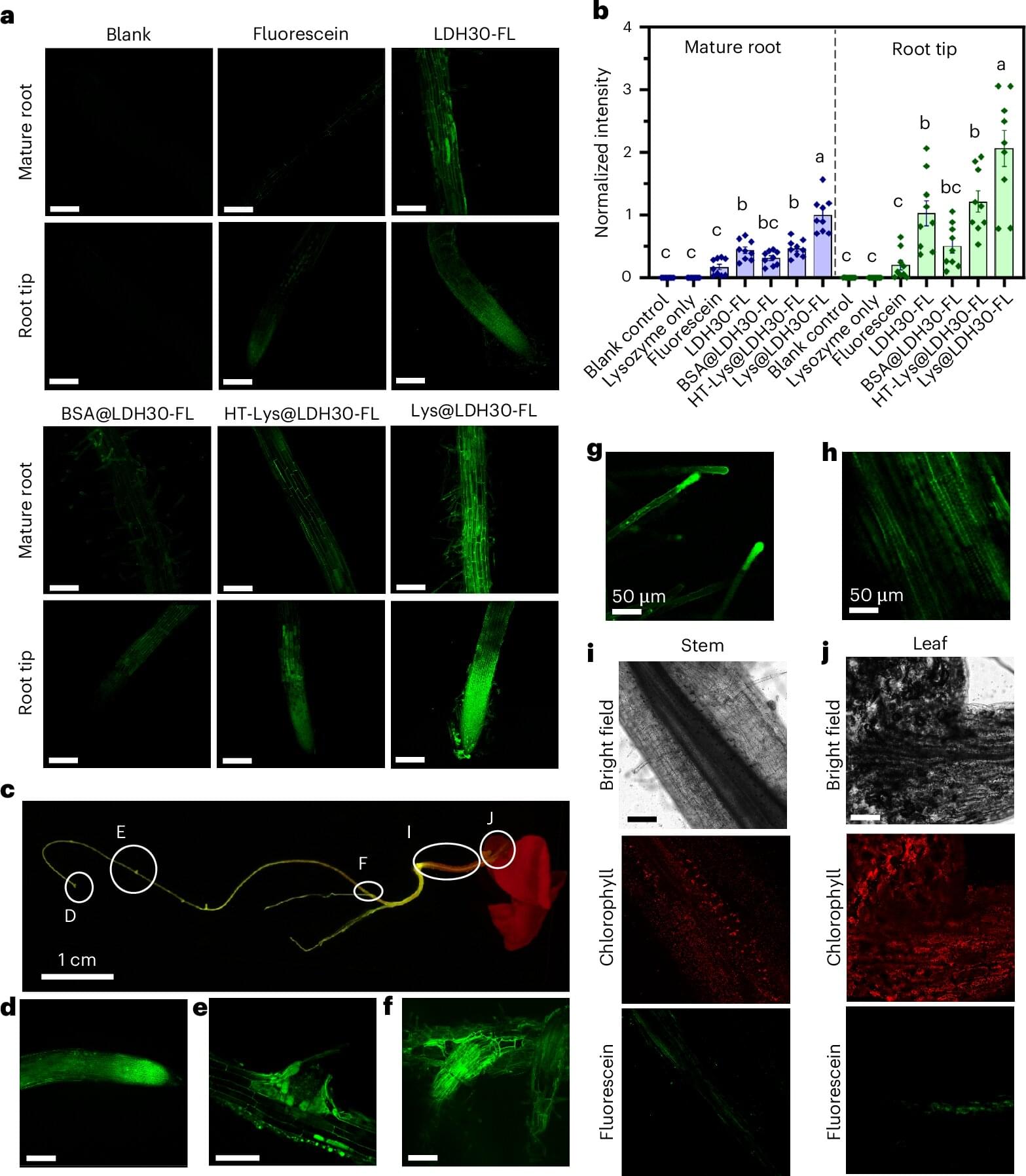
University of Queensland researchers have for the first time introduced genetic material into plants via their roots, opening a potential pathway for rapid crop improvement. The research is published in Nature Plants.
Professor Bernard Carroll from UQ’s School of Chemistry and Molecular Biosciences said nanoparticle technology could help fine-tune plant genes to increase crop yield and improve food quality.
“Traditional plant breeding and genetic modification take many generations to produce a new crop variety, which is time-consuming and expensive,” Professor Carroll said.
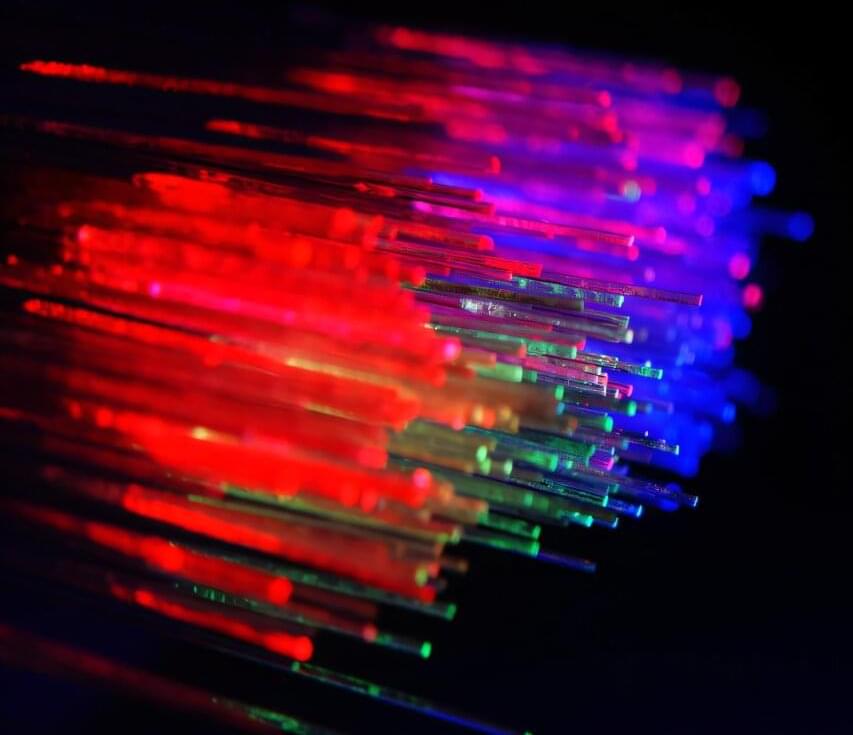
From high-speed communication to quantum computing and sensing, the detection, transmission, and manipulation of light (photons) have transformed modern electronics. Central to these systems are photon detectors, which detect and measure photons.
One notable type is the superconducting nanowire single-photon detector (SNSPD). SNSPDs utilize ultra-thin superconducting wires that quickly transition from a superconducting state to a resistive state when a photon strikes, allowing for ultra-fast detection.
The wires in these detectors are arranged in a Peano arced-fractal pattern, which remains consistent across various scales. This unique design enables the detector to detect photons regardless of their direction or polarization (the orientation of the photon’s electric field). Due to these advantages, arced-fractal SNSPDs (AF SNSPDs) are crucial in applications such as light detection and ranging, quantum computing, and quantum communication.

Researchers have made a breakthrough in THz frequency conversion using graphene.
Graphene is an allotrope of carbon in the form of a single layer of atoms in a two-dimensional hexagonal lattice in which one atom forms each vertex. It is the basic structural element of other allotropes of carbon, including graphite, charcoal, carbon nanotubes, and fullerenes. In proportion to its thickness, it is about 100 times stronger than the strongest steel.
Go to https://historicmail.com/DROID and check out with code DROID to get 10% off on their Christmas Sale on your gifts and help support the channel. Thanks to Historic Mail for sponsoring this video!
Machines so tiny they would be far smaller than a human blood cell, this is the promise of nanotechnology, and they already exist but how are they even made and will they be scarier than A.I. Experts say that we are just at the beginning of the nanobot revolution and what they promise could little short of miraculous. In this video we look at how we got here and what the current state of the art is.
To give one off tips and donations please use the following :
https://www.buymeacoffee.com/curiousdroid.
Patreon : https://www.patreon.com/curiousdroid — For longer term channel support.
Paypal.me : https://paypal.me/curiousdroid — For 1 off direct tips and thank you payments.
Facebook : https://www.facebook.com/curiousdroid.
Quote: “We are like butterflies who flutter for a day and think it’s forever” : Carl Sagan.
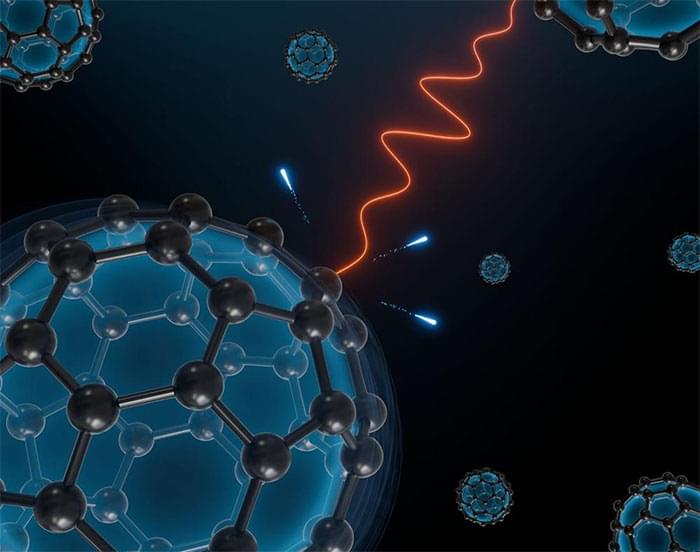
Light-sensitive nanoparticles promise a wide range of applications, for example in the field of sensor technology or energy generation. However, these require knowledge and control of the processes taking place within them. Plasmons, collective electron movements in the nanoparticle which transport energy, are essential in the behaviour of such nanoparticles.
Time-resolved experiments in the attosecond range reveal now that the importance of electronic correlations in these plasmons increases when the size of a system decreases to scales of less than one nanometre.
The study, published in the journal Science Advances (“Correlation-driven attosecond photoemission delay in the plasmonic excitation of C 60 fullerene”), was led by the University of Hamburg and DESY as part of a collaboration with Stanford, SLAC National Accelerator Laboratory, Ludwig-Maximilians-Universität München (LMU), Northwest Missouri State University, Politecnico di Milano and the Max Planck Institute for the Structure and Dynamics of Matter (MPSD).
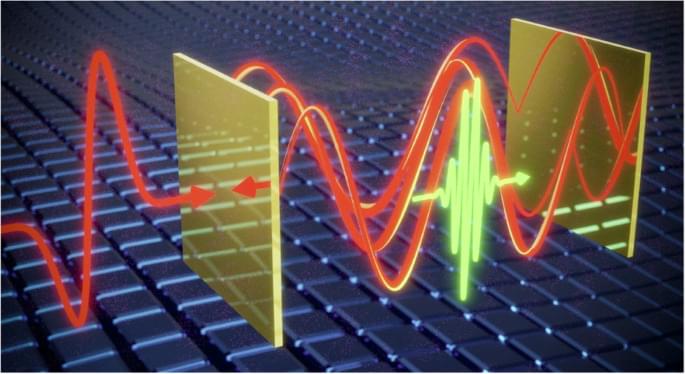
Our hybrid EOC design extends these concepts by providing continuous tunability and the potential for adding active samples for investigations of intra-cavity light-matter interactions. In the ‘empty’ hybrid cavity investigated here, we observe a rich mode structure, spurring development of both a field-based model to quantify these cavity modes and their properties, as well as a complementary coupled-oscillator description to gain further understanding of the delicate interplay between the various sub-cavities, which thereafter constitute the hybrid EOC modes. Our detailed analysis of these theoretical vantage points will be highly valuable when considering the addition of an active material, after which the hybrid cavity optical response will become even more intricate. Integration of active materials into hybrid EOCs will yield novel access to light-matter interactions—namely access to energy exchange on sub-Rabi-cycle timescales, and furthermore local probing and even control over tunable light-matter superposition—the latter two unavailable when viewed by conventional cavity transmission techniques. Potential ‘active materials’ for these in-situ investigations of tunable light-matter interactions include conventional polar semiconductors40—oftentimes displaying very large oscillator strengths—atomically-thin monolayers or heterostructures ofion-metal dichalcogenides41, hybrid organic-inorganic 3D21,42 and 2D lead-halide perovskites43,44, and novel, magnetically-ordered systems45.
Implementation of EO sampling inside of THz cavities will also significantly advance further areas of contemporary research. As a prominent example, field-resolved probing inside a defined electromagnetic cavity will provide novel opportunities for measurements of electromagnetic vacuum field fluctuations46,47. Most notably, a high-quality factor EOC constitutes an advantageous testing ground for measurement of quantum vacuum fluctuations, by efficiently excluding sources of external radiation. Moreover, EOCs are not limited to either macroscopic environments or the THz spectral region. Although EO sampling is routinely employed up to the mid-IR spectral region9, it has recently been extended even into the visible range48, allowing for future broadband measurements of intra-cavity electric fields. Similar sampling techniques have been used to sample electric fields inside of metallic antenna-based cavities49,50, demonstrating that although on-chip photonic implementations lack the dynamic tunability, the general technique is readily implemented in other near-field contexts, including even tip-based nano-photonic applications51. Furthermore, EOCs utilizing quartz are uniquely suited candidates for chiral THz cavity phenomena52, due to quartz’s capability for straightforward and rapid measurement of vectorial electric field trajectories34.
In conclusion, we have established versatile and compact designs for a new class of active THz cavities, which allow for in-situ retrieval of intra-cavity electric fields. By developing a cavity-correction function formalism for these EOCs, we have demonstrated a rigorous and reliable method to extract absolute fields in a quantitative, and phase-resolved manner. Utilizing straightforward fabrication techniques, we tune the cavities’ quality factors and resonance frequencies. Furthermore, we have introduced a hybrid EOC, offering continuously-tunable cavity modes across the entire THz-frequency range, within a single device. This fundamental advancement lays the groundwork for accommodating additional active materials for in-situ measurement of and control over light-matter coupling. We understand the rich hybrid mode structure, including apparent signatures of strong coupling, via cavity-field and coupled-oscillator formalisms, which will be key to deciphering signatures of light-matter coupling in more complicated devices. Therefore, this work opens new dimensions of THz cavity physics, particularly in the realms of cavity-controlled ground-and excited state material properties. This includes possibilities such as cavity-enhanced THz emission, selectively-driven Floquet states53, and cavity-controlled nonlinear THz driving15,54, thus paving the way for comprehensive investigations of THz cavity quantum electrodynamics.
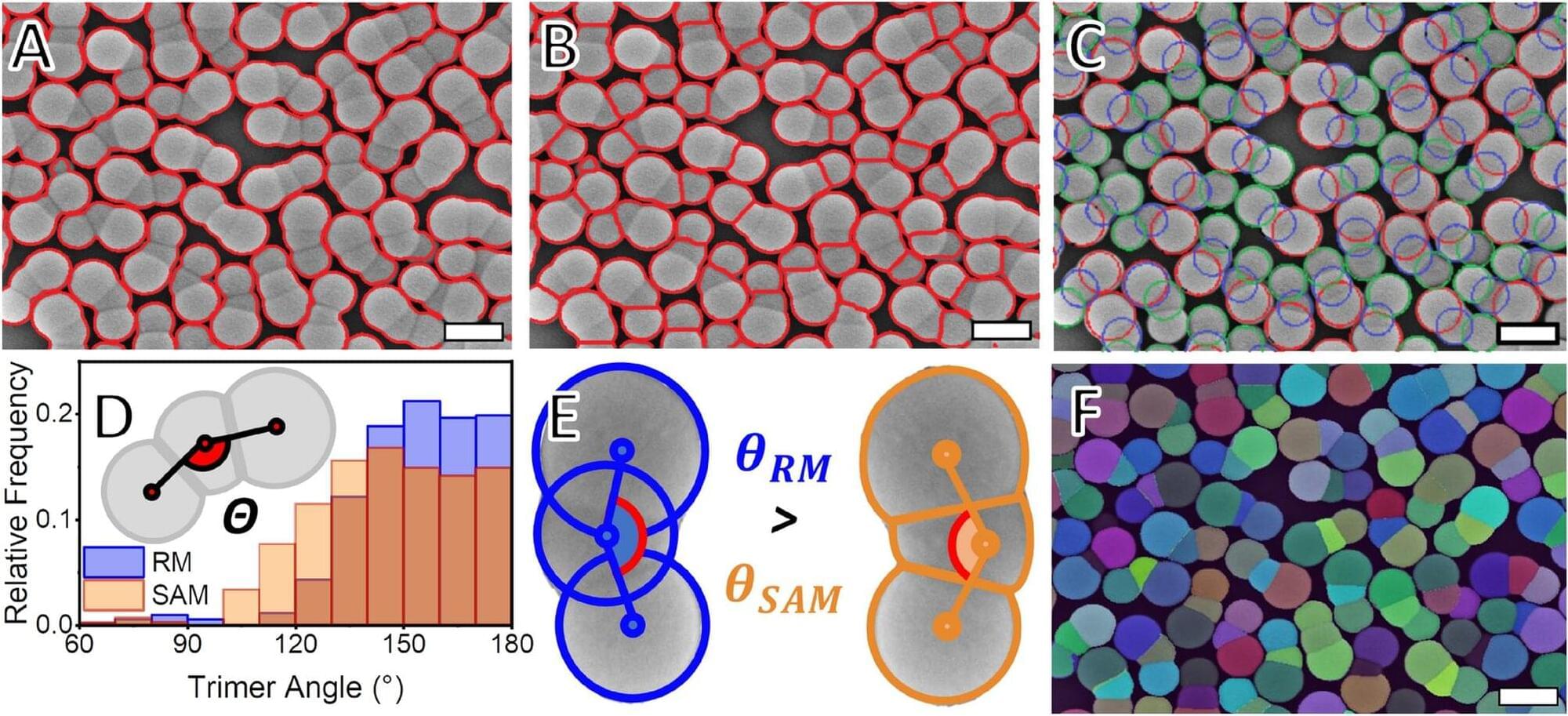
Nanoparticle researchers spend most of their time on one thing: counting and measuring nanoparticles. Each step of the way, they have to check their results. They usually do this by analyzing microscopic images of hundreds of nanoparticles packed tightly together. Counting and measuring them takes a long time, but this work is essential for completing the statistical analyses required for conducting the next, suitably optimized nanoparticle synthesis.
Alexander Wittemann is a professor of colloid chemistry at the University of Konstanz. He and his team repeat this process every day. “When I worked on my doctoral thesis, we used a large particle counting machine for these measurements. It was like a cash register, and, at the time, I was really happy when I could measure three hundred nanoparticles a day,” Wittemann remembers.
However, reliable statistics require thousands of measurements for each sample. Today, the increased use of computer technology means the process can move much more rapidly. At the same time, the automated methods are very prone to errors, and many measurements still need to be conducted, or at least double-checked, by the researchers themselves.